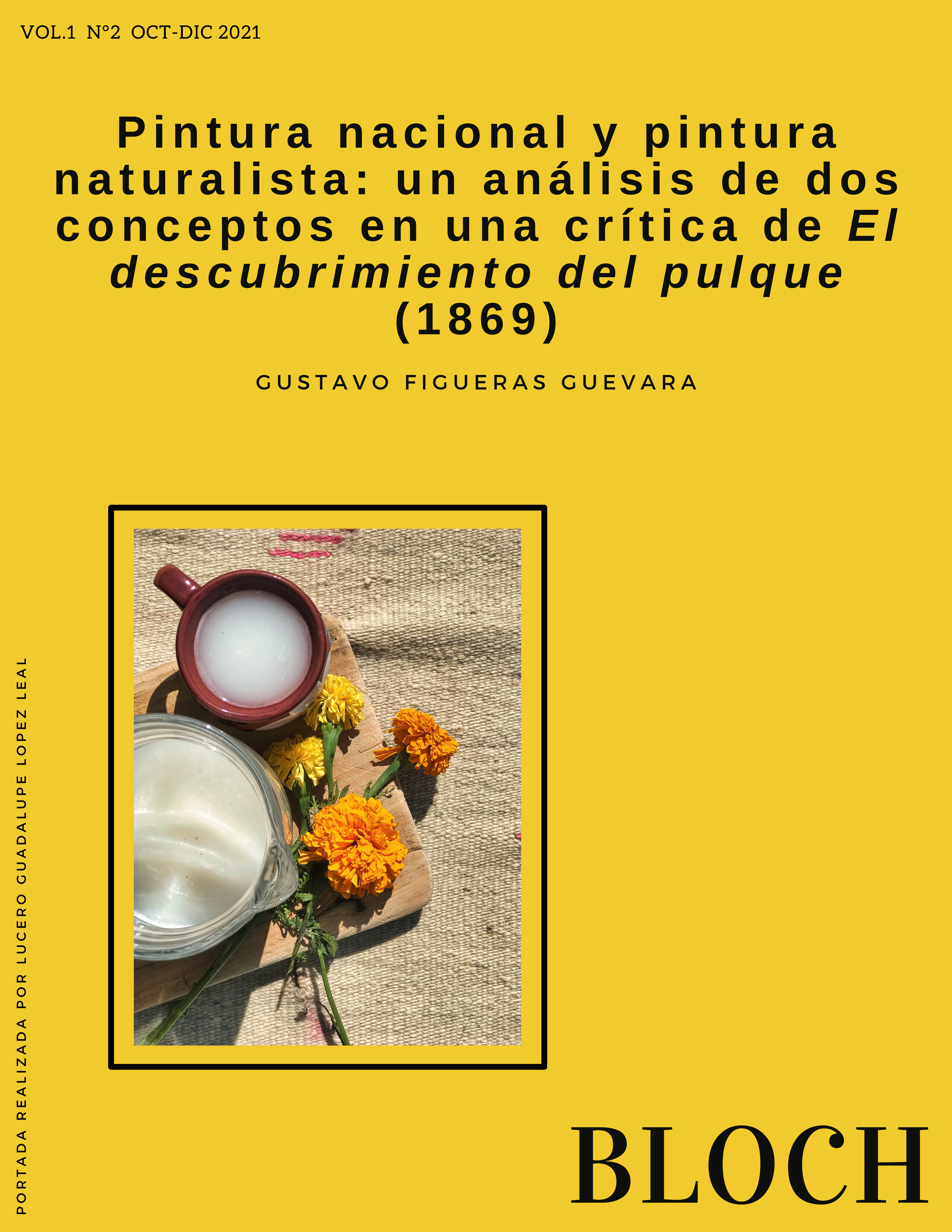National Style Painting And Naturalistic Painting: An Analysis of Two Concepts In A Critique On El descubrimiento del pulque (1869)

Published 2021-10-02
Keywords
- Visual Culture,
- Verbal Language,
- Visual Language,
- Art Critique,
- 19th Century
How to Cite
Copyright (c) 2021 Gustavo Figueras Guevara

This work is licensed under a Creative Commons Attribution 4.0 International License.
Abstract
The aim of this essay is to recover the definition of two concepts pertaining to the visual culture of the 19th century, specifically, that of the art critique in Mexico. Those concepts are national style painting and naturalistic painting. Both of them are used in the context of a critique of painting published in 1883 by Ignacio Manuel Altamirano, a Mexican intellectual. Through the analysis of this text, and through the analysis of how its concepts refer to the formal resources of three paintings (El descubrimiento del pulque, chiefly, and Escenas de la vida de la virgen and La Sagrada familia), we came to the following conclusions: naturalistic painting, or painting inspired by nature, is defined by its objective representation of the world; in a strictly visual sense, this type of painting can be identified by its restraint. National style painting is the one that, thanks to its naturalistic approach, is able to capture the inherent beauty of Mexican themes. In terms of form and color, this kind of images corresponds to characters, landscapes and events that belong in secularist Mexican history, as well as to a visual restraint.
Downloads
References
- Altamirano, I. M. (1883). Revista artística y monumental. En Caballero, M. (Ed.), Primer almanaque histórico, artístico y monumental de la República mexicana (pp. 88-107). Chas M. Green Print. Co. http://cdigital.dgb.uanl.mx/la/1020133931/1020133931.html
- Baxandall, M. (1972). Pintura y vida cotidiana en el Renacimiento. Gustavo Gili.
- Byer, G. (2021). Gloria in Excelsis Deo: Gloria a Dios. Oregon Catholic Press. https://www.ocp.org/es- us/blog/entry/gloria-in-excelsis-deo-the-glory-to-god
- Fernández, J. (1972). Estética del arte mexicano. Universidad Nacional Autónoma de México.
- Museo Nacional de Arte (s.f.). Escenas de la vida de la virgen. Museo Nacional de Arte. http://munal.emuseum.com/objects/566/la-sagrada-familia?ctx=7bd34a0c-6158-460d-8364-176ed2b0d11a&idx=4.
- Moxey, K. (2013). El tiempo visual. La imagen en la historia. Sans Soleil.
- Pérez Vejo, T. (2003). Los hijos de Cuauhtémoc: el paraíso prehispánico en el imaginario mexicano decimonónico. Araucaria: Revista Iberoamericana de Filosofía, Política, Humanidades y Relaciones Internacionales. 5, pp. 95-115. file:///C:/Users/gusiw/Downloads/Dialnet-LosHijosDeCuauhtemoc-1047329.pdf
- Ramírez, F. y Velázquez, A. (1991). Lo circunstancial trascendido: dos respuestas pictóricas a la constitución de 1857. En Tiempo y arte. XIII Coloquio internacional de historia del arte (pp. 167-192). Universidad Nacional Autónoma/Instituto de Investigaciones Estéticas.
